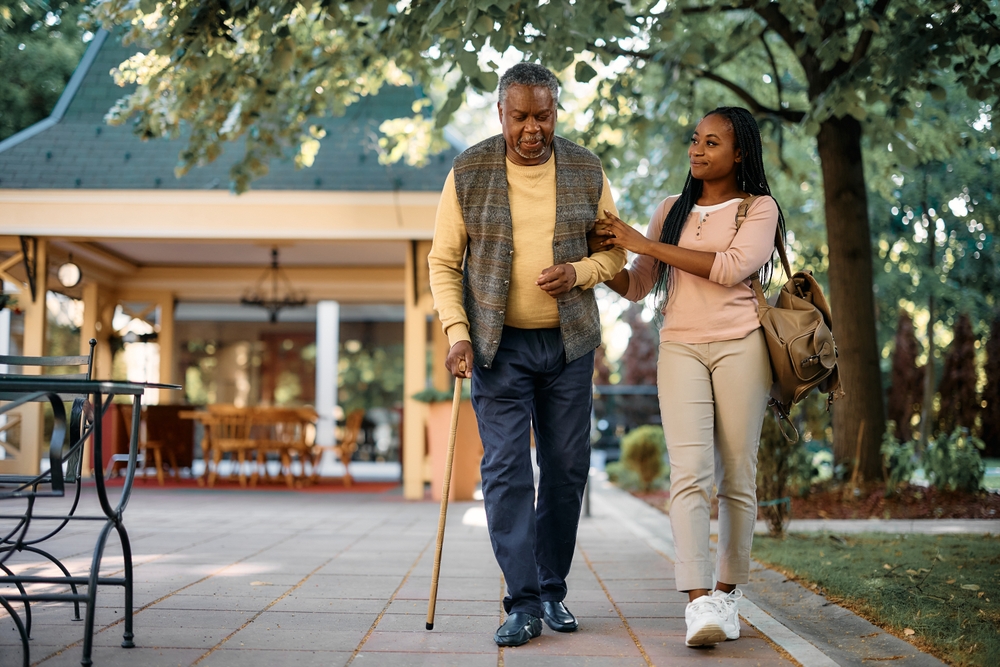Remedies for Joint Pain Treatment at Home
Category:

At best, joint inflammation is uncomfortable. At its worst, it’s incredibly painful and can lead to stiffness, hindered mobility, and an often-permanent erosion of cartilage. Pain in the joints is usually associated with arthritis or other chronic medical conditions like tendinitis, but after years of wear and tear from regular use, joint pain comes for us all.
Although there isn’t a one-size-fits all cure, there are a number of natural remedies for inflammation and joint pain that can be employed from the comfort of your home. In this post, we’ll explore home remedies for joint pain, provide tips on relieving joint pain naturally, and let you know when it’s time to see a doctor about your symptoms.
Download Your Guide to Welcoming a Caregiver
What Helps with Joint Pain Naturally?
One of the best natural remedies for joint pain is making sustainable lifestyle changes that will build strength and reduce stress on your joints to prevent pain in the future. Natural solutions for joint pain include:
Regular Exercise
According to the Mayo Clinic, one of the best natural ways to reduce joint inflammation is by strengthening your body’s joints (specifically those in your knees and elbows — where arthritis is most prevalent) through regular exercise.
Mayo suggests a balance of range-of-motion exercises to lessen stiffness, strengthening exercises to build muscles which support and protect the joints, and aerobic exercises to support heart and lung health, help control weight, and increase energy.
To lessen the impact of exercise on the joints, low impact exercises like walking and swimming are best. Exercises that focus on movement like yoga and tai chi can also help improve balance, prevent falls, and ease tension. Additionally, exercising in properly-cushioned shoes on soft surfaces is highly recommended to protect the delicate cartilage in your joints.
Weight Loss
If necessary, your doctor may suggest losing weight to reduce the strain on your joints.
Take Up Hobbies that Require Hand Movement
The Arthritis Foundation points out that activities such as crocheting, knitting and sewing are great examples of hobbies that require dexterity in the hands, as they keep the joints moving back and forth for extended periods of time. As an added bonus, it’s also a terrific creative outlet for older adults, too!
Home Remedies for Pain in Joints
If you’re currently experiencing joint pain and looking for home remedies that can provide immediate relief, you have a number of options at your disposal. However, it’s important to remember that no two bodies are the same, and that it may take some trial and error to figure out which natural solutions for joint pain are right for you. Options for joint pain treatment at home include:
Applying Heat and Ice
Tense muscles and joints can be relieved with routine hot/cold treatments. This can be achieved most easily by alternating heating pads to make your body more limber and ice packs to numb the pain and reduce joint inflammation.
Soaking in a Warm Bath or Hot Tub
Similarly, soaking in a warm bath, hot tub, or hydrotherapy tub (jet-equipped bathtub) works just as well.
Topical Treatments
Some patients looking for natural help for joint pain have found success with topical treatments that you can rub into your skin to help reduce pain. These may take the form of natural supplements like capsaicin, a herb found in chili peppers that works wonders when applied topically. However, over the counter or prescription-strength solutions may be necessary in more severe cases.
When to See a Doctor for Joint Pain
If these medications or treatments are ineffective, it may be time to see your doctor to explore more serious options for pain management or relief. Your doctor may suggest:
- Pain Relievers – acetaminophen and NSAIDs may help ease your pain and manage inflammation. While both medicines are available over the counter, stronger doses are available with a prescription.
- Steroids – steroid injections to the joint can provide short-term pain relief and reduce swelling.
- Physical or occupational therapy – getting the help of a physical or occupational therapist alongside a balanced exercise regiment can help ease pain while increasing flexibility and mobility.
- Supportive aids – movement aids like a brace, cane, or orthotics for your shoes can help support weakened joints and avoid reinjury.
Joint pain does not have to control you or your loved one’s life. By following these tips on a daily basis, arthritis can finally be kept under control naturally. To learn more about our home care services, contact our caregiving team today at 1-800-GRISWOLD or find a Caregiver near you.
Subscribe
Date: 2025-07-29
Category: